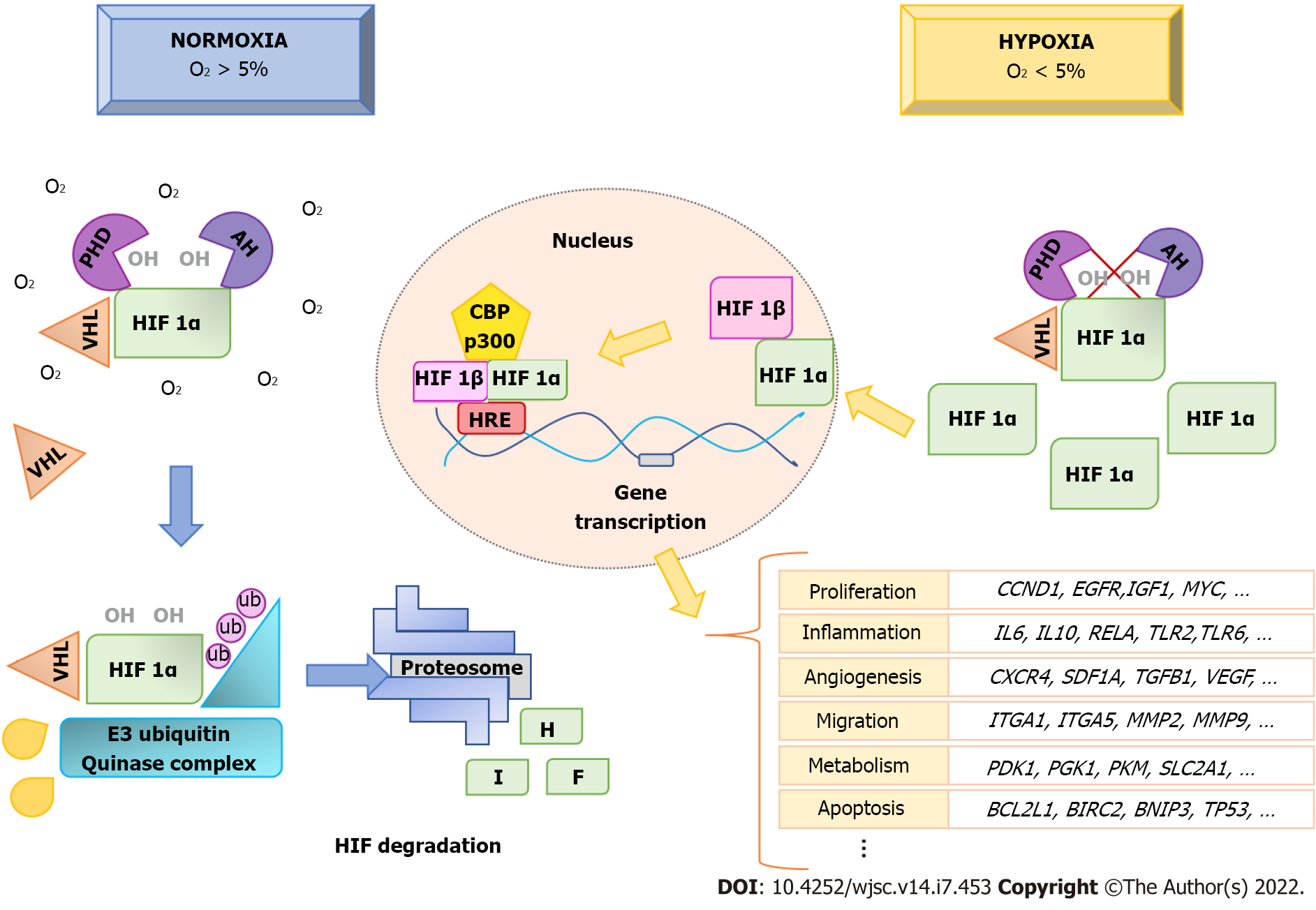Copyright
©The Author(s) 2022.
World J Stem Cells. Jul 26, 2022; 14(7): 453-472
Published online Jul 26, 2022. doi: 10.4252/wjsc.v14.i7.453
Published online Jul 26, 2022. doi: 10.4252/wjsc.v14.i7.453
Figure 1 Hypoxia-inducible factor 1A protein regulation in hypoxia.
Hypoxia-inducible factor (HIF) 1A is continuously hydroxylated and degraded by the proteosome, when O2 concentrations are greater than 5%. However, in hypoxia (O2 < 5%) HIF1A hydroxylation is inhibited and it accumulates in the cytoplasm. It then translocates to the nucleus, where it forms a heterodimer with HIF1B. This, together with the coactivator CBP/P300, binds to hypoxic-response elements at gene-promoter sites, activating transcription of genes involved in biological processes such as angiogenesis, proliferation, migration, inflammatory response, metabolism, and apoptosis, among others. This produces physiological adaptive responses of cells to hypoxia. HIF: Hypoxia-inducible factor; HRE: Hypoxic-response elements; PHD: Prolyl HyDroxylases; VHL: Von Hippel-Lindau.
- Citation: Pulido-Escribano V, Torrecillas-Baena B, Camacho-Cardenosa M, Dorado G, Gálvez-Moreno MÁ, Casado-Díaz A. Role of hypoxia preconditioning in therapeutic potential of mesenchymal stem-cell-derived extracellular vesicles. World J Stem Cells 2022; 14(7): 453-472
- URL: https://www.wjgnet.com/1948-0210/full/v14/i7/453.htm
- DOI: https://dx.doi.org/10.4252/wjsc.v14.i7.453









